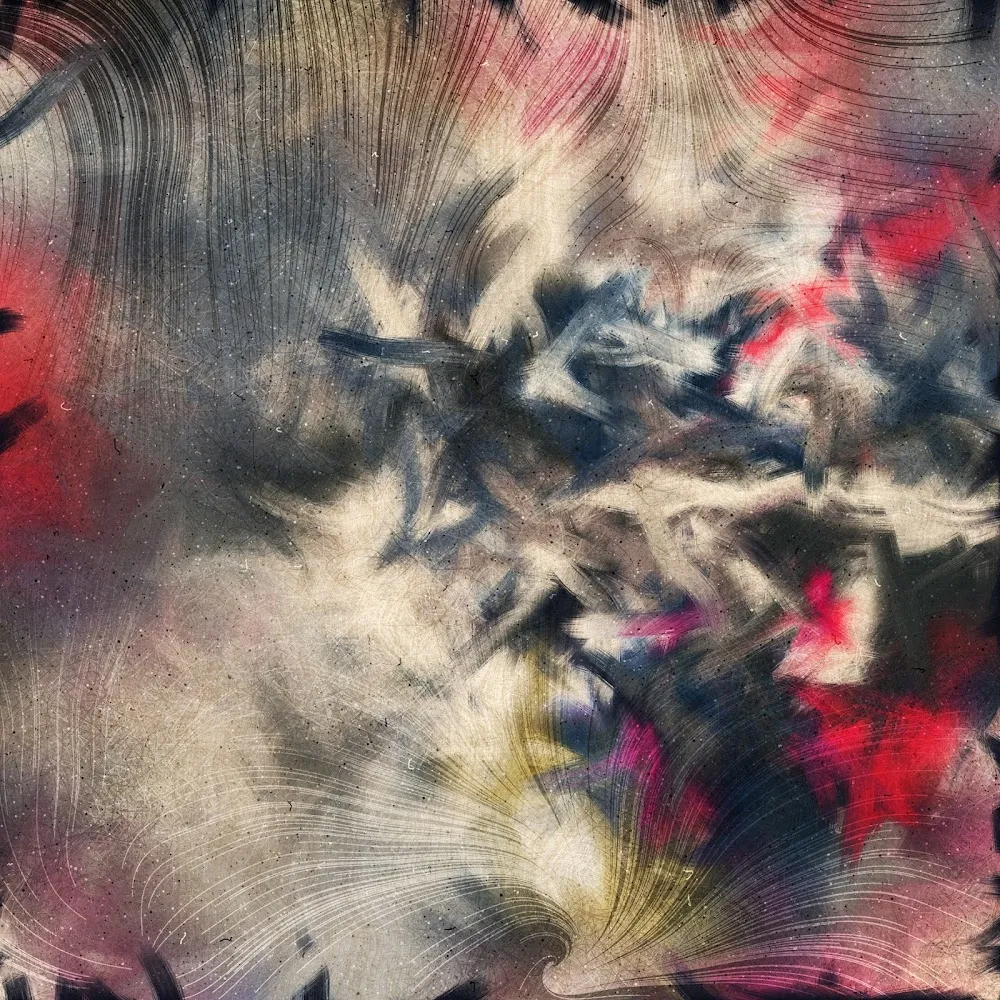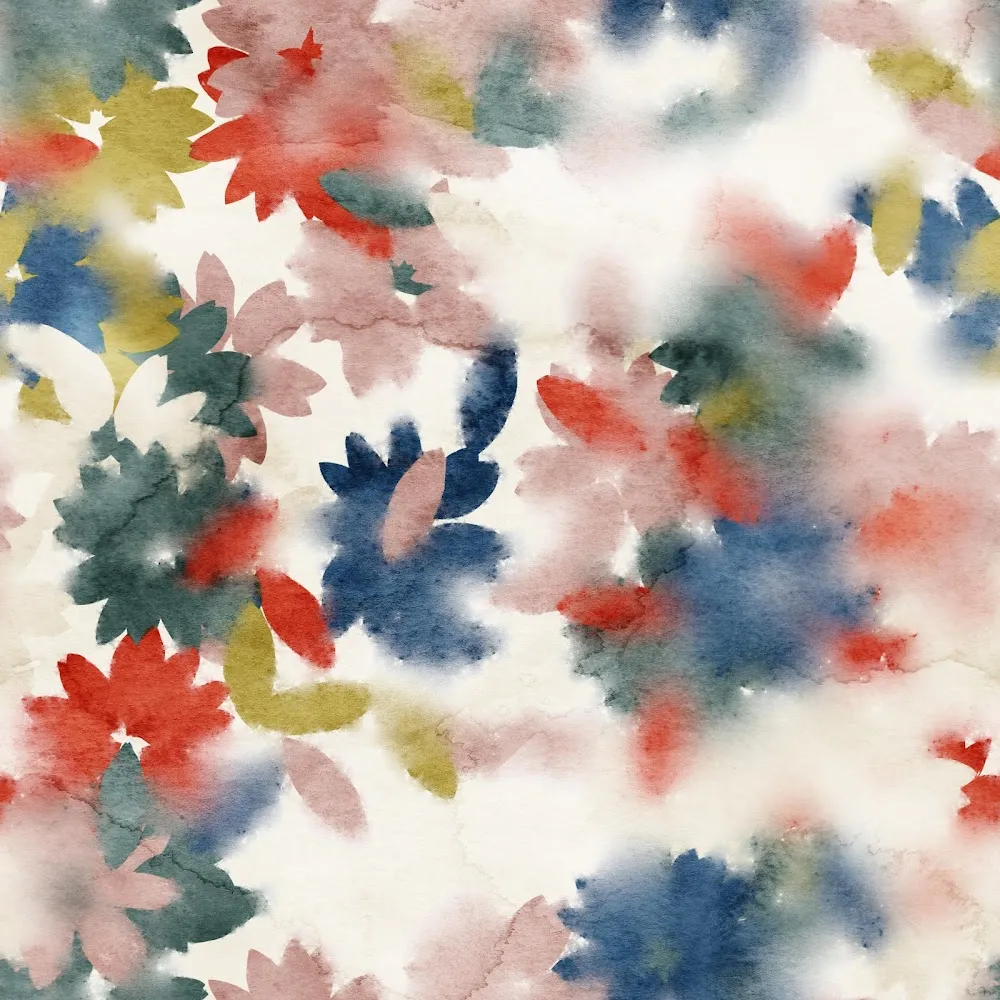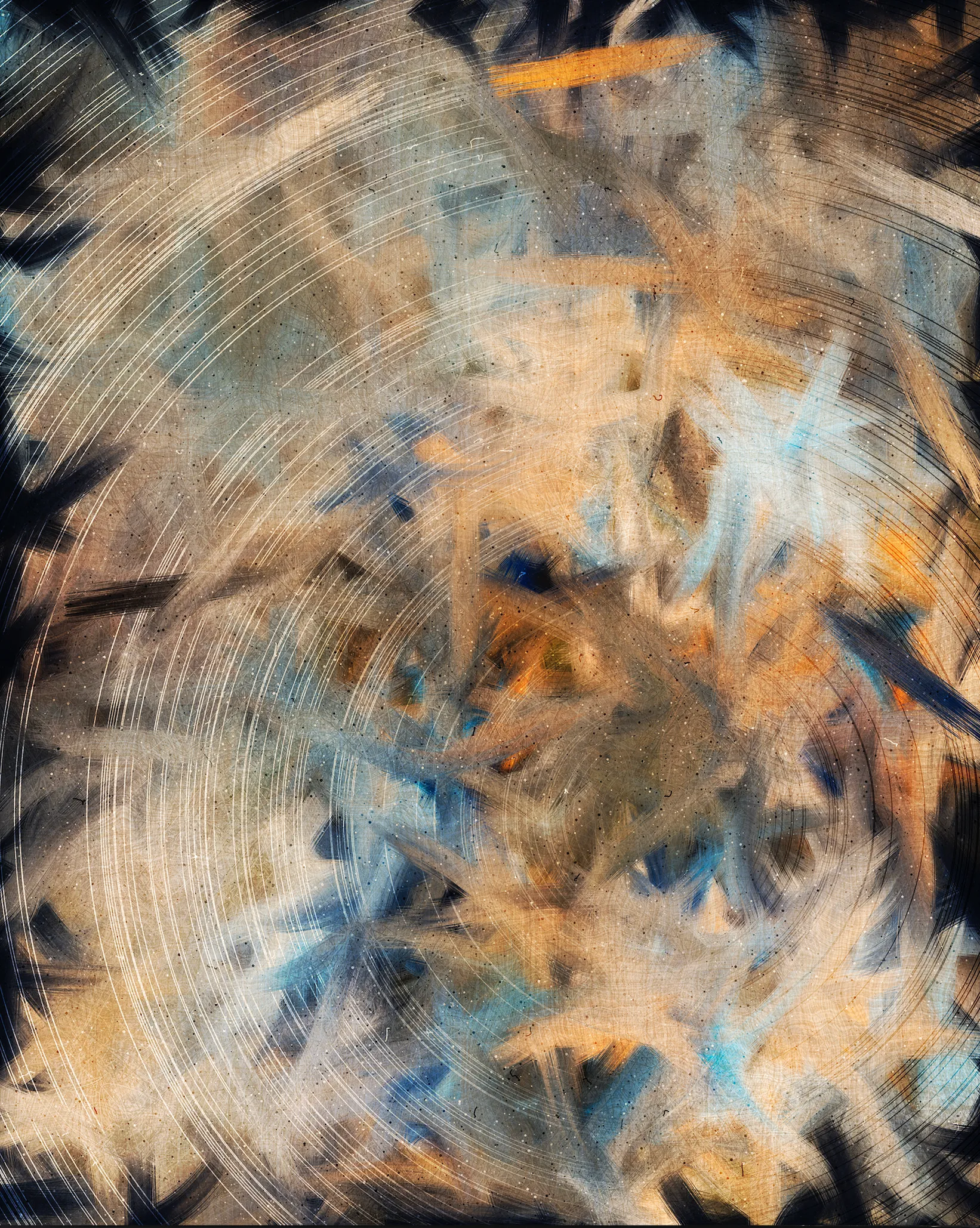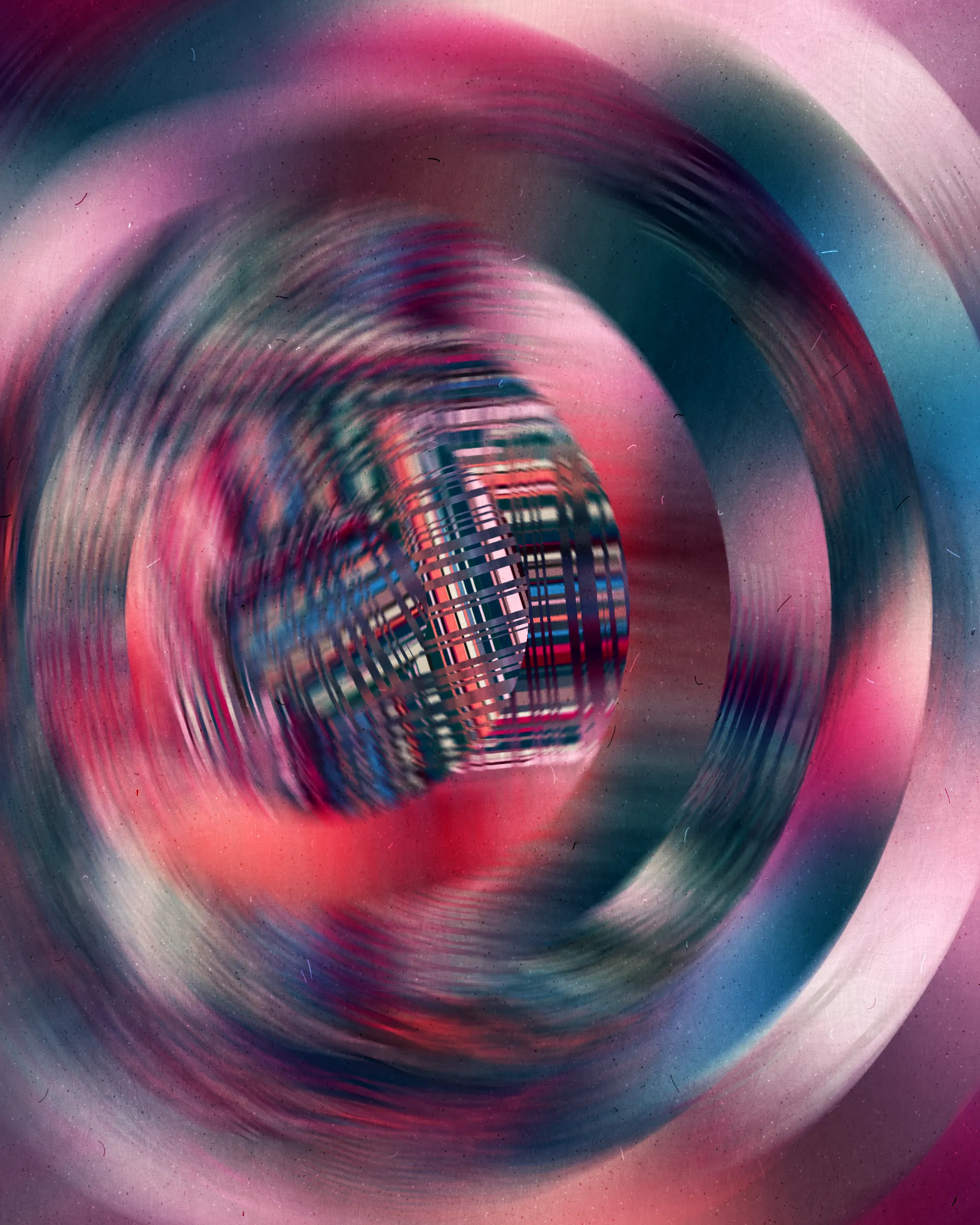Subscribe to get the latest on artists, exhibitions and more.
Notes on Cosmic Rays with Melissa Wiederrecht

Leyla Fakhr: Wow, I don’t even know where to begin with this series Melissa! It feels this series is somewhat of an internal revolution, or an artistic awakening! When I first saw the early iterations on Twitter I thought to myself, this artist has just unravelled a very special project. Did it feel like that for you too?
Melissa: I was indeed very surprised when the piece came together like this. It started as a simple technical exploration: I wanted to figure out how to make brush strokes that would smudge the image underneath them. I made one, then turned them up to 1000 and made them rotate randomly. At one point, I accidentally overlaid the whole image on itself without realising it and was instantly taken aback by its power. It did indeed feel like I had hit on something special at that point. I am trying to remember when exactly I added the line work, but the idea was that I wanted something to add depth and interest and draw the viewer's eye around the image. I am really proud of how it all came together in the end - I feel so much when I look at the pieces - and each one hits me differently somehow.
Leyla: What I love most about the series is the expressionistic compositions, but also how it involves subtly different geometric forms into the overall picture. What were your thoughts when you were creating these? How do you bring in these juxtaposing elements?
Melissa: I am always drawn to dichotomy and contrast: order vs. chaos, light vs. dark, intention vs. randomness, and on and on. I wanted some aspect of the piece to contrast with the soft and abstract forms that emerged from the brushwork. I also wanted something to draw the eye around the image and settled on the lines. I made the lines blend in with a gradient - dark on one side, light on the other, and the medium tone (in which you actually don't see the lines at all) always falls over the focal point. I played with including flat, digital, transparent rectangles in early versions of the piece but dropped them at some point for whatever reason.
Leyla: These works seem so different from your earlier works. Do you feel you are going more down the route of painterly expression through code? Do you take inspiration from more traditional painting these days?
Melissa: I do indeed take inspiration from traditional paintings, although I wouldn’t say that I am driven to try to emulate traditional painting as closely as possible. I am drawn to beauty, colour, texture, and contrast, and I am not afraid to incorporate elements that look analog as well as elements that look digital - even in the same piece. I am neither trying to emulate analog materials nor avoid doing so. I couldn’t care less about the debate of whether generative art should try to emulate analog materials. I just want to make something beautiful that makes my heart sing. I want to say "ooooh!" every time I refresh the work and get a new piece! Sometimes that will include things that look analog, and sometimes it won't. On the other hand, texture is a must for me. I think people take the fact that I use a lot of texture as meaning that I am trying to go for analog... but really, I just love texture for its nuance and detail. LOTS of texture. Layers and layers and layers of texture. And texture on top of that.
Leyla: There is a lot of talk that there aren't enough female coders. I am aware that you are teaching your young children to code. Do you think it is true that women are less inclined to enter the space?
Melissa: I'm not currently teaching many children to code - except my own kids. Although actually, I hope to start teaching more of them soon - because my husband and I have started putting together an "innovation centre" or "library" or "computer lab" or something along those sorts in Sudan with the charity money from my Art Blocks drop Sandaliya. It will be a place where kids can come take classes, and the local schools can bring their students to use the computers, and just all around a place where people can get opportunities with computers and books that they wouldn't have had. I am oblivious to what is going on in the minds of most girls and why they would be avoiding learning to code - I see no reason they should avoid it. Clearly they must be, however, given the numbers. I am trying to set a good example and am excited to help girls learn. Generative art, in particular, seems like a fantastic way to get girls into coding - being very visual and much less abstract than learning to code the usual way.
Leyla: How do you feel about collaborations, would there be an artist you'd like to collaborate with in the future?
Melissa: I love the idea of doing more collaborations! In particular, I would really love to collaborate with Emily Xie, William Mapan, mpkoz... or so many others. There are so many amazing artists that I look up to and would be proud to work with.
Leyla: Your career has skyrocketed very quickly. This is the beauty of the digital space. Where do you want your work to go from here? What would be the dream? Or are you already living it?
Melissa: This is such a hard question! What you call "skyrocketing" feels to me like "jumping in head first," and I feel completely lost - but it is exciting, too, of course. Also, YES, I am living my dream - to focus full-time on generative art, connect with people who love my art daily, make an income with my art, and be able to do things to help others. Regarding my future goals, I honestly feel like the whole space is so new (and/or I'm so new to it) that I don't even know what the possible goals are. But of course, I want to keep making art and growing and expanding my skills and taste. I really want to push the boundaries of generative art with every single one of my pieces. I want to be one of the artists who help discover all the things generative art is capable of. I want to touch people's hearts and emotions with my work. I would love to make work that people who have no idea how it is made (i.e., that it is generative art) connect with and love. I also would love to keep doing meaningful things for charity with my work.
Leyla Fakhr
Leyla Fakhr is Artistic Director at Verse. After working at the Tate for 8 years, she worked as an independent curator and producer across various projects internationally. During her time at Tate she was part of the acquisition team and worked on a number of collection displays including John Akomfrah, ‘The Unfinished Conversation’ and ‘Migrations, Journeys into British Art’.
She is the editor...
Melissa Wiederrecht
Is a Generative Artist from America, living and working in Saudi Arabia. She chose generative art as her career after earning a MS in Computer Science in 2014. Having been fascinated by code-generated art for more than 20 years, Melissa continuously pushes the boundaries of generative art as a medium, both technically and aesthetically.
Melissa is an Artblocks Curated artist, and released...



